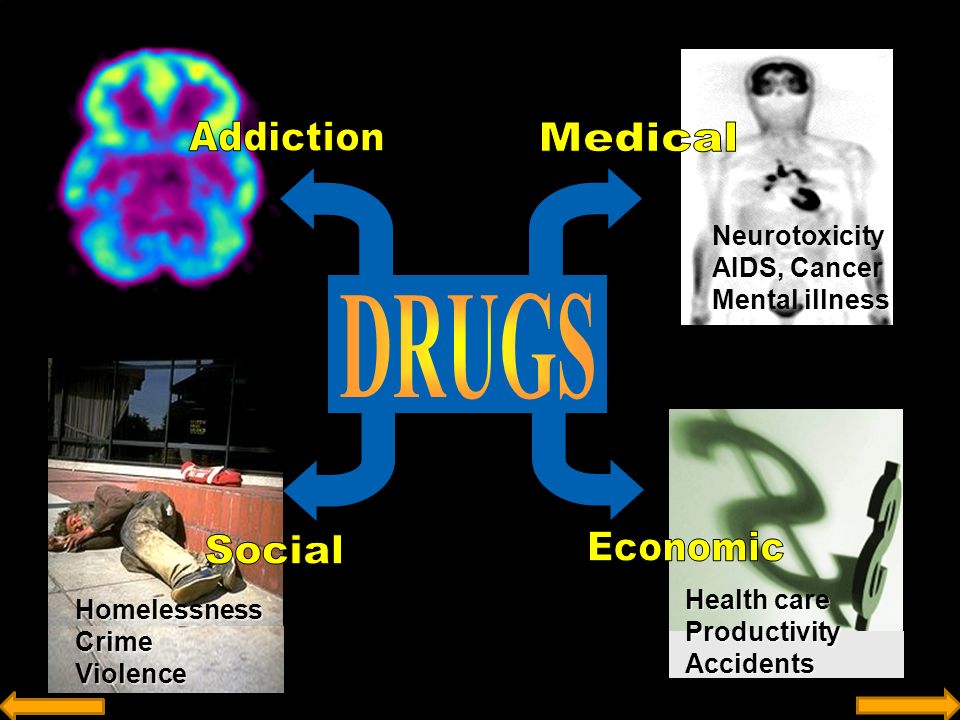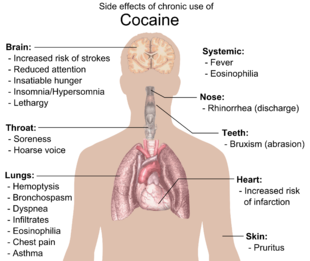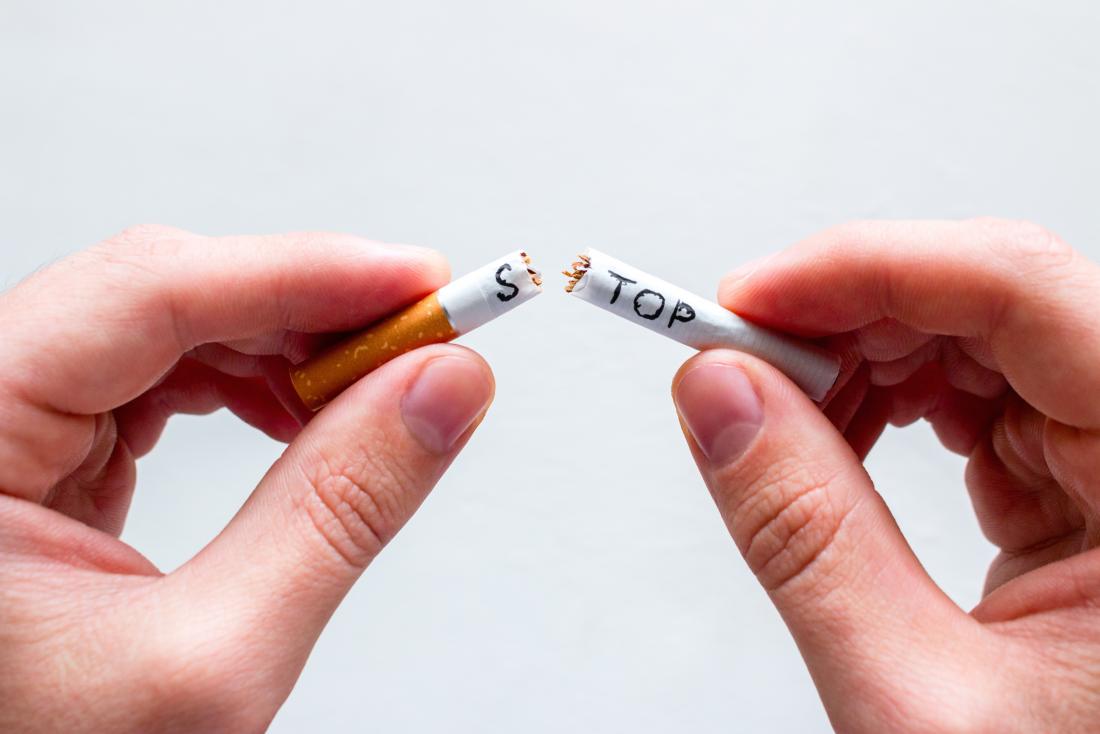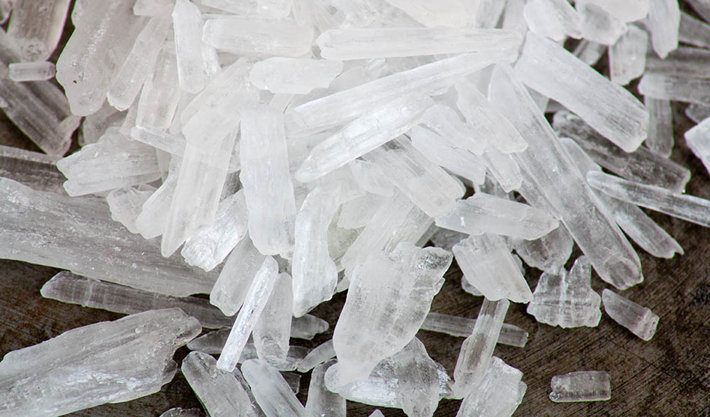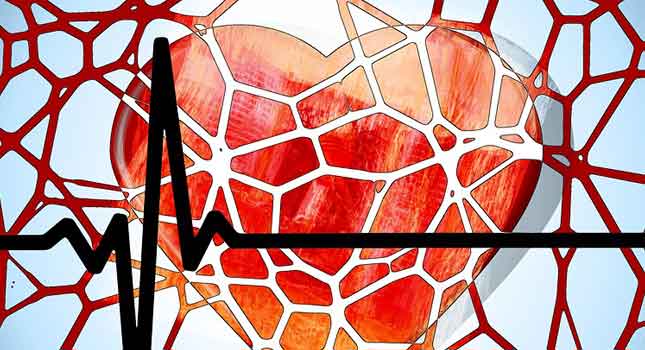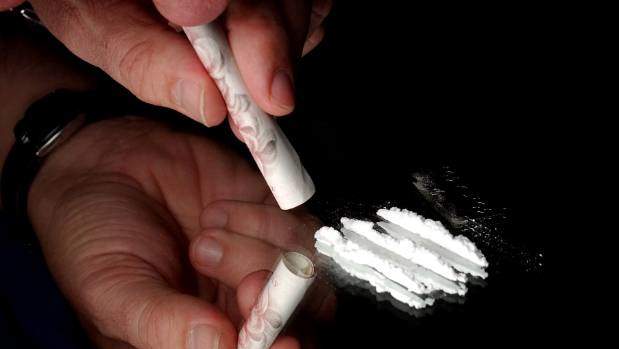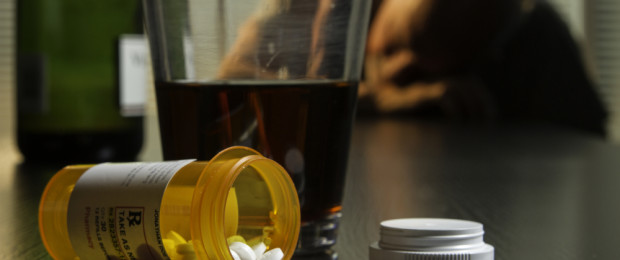WELCOME TO SALAMAT CLINIC
If you or your loved one is in need of alcohol or drug rehab treatment, you are not alone. Addiction is affecting many families at a very alarming pace. SALAMAT Clinic and Drug Rehabilitation Center Treatment is here to offer you hope and healing – and will work with your unique family dynamic to achieve a full, lasting recovery
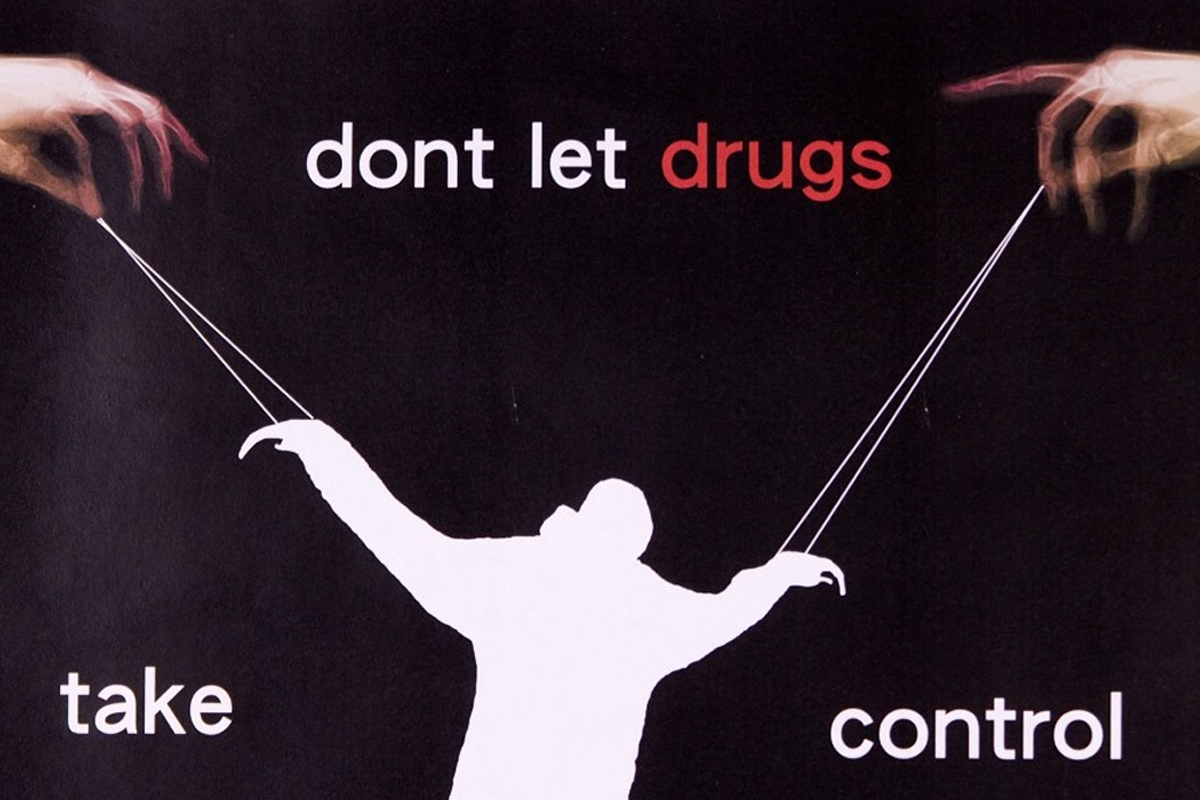
These days more than 30 percent of teenagers around the world experiment with prohibited drugs. Drug addiction in teenagers has now become a serious issue. This addiction to alcohol and drugs in teenagers not only causes problems at school and at home but can also significantly spoil their further studies and careers. In such a case, an immediate rush to a drug addiction rehab center is necessary.
Everyone understands how teenage drug addiction can turn into a life-long problem if not treated at the right time. However, what people do not realize is that drug addiction is a medical disorder. It can create chronic problems and increase the chances of sudden death. Once a child enters their teenage years, violent mood swings and changing behavior are quite normal.
TREATMENT PLAN
We aim to assist and empower people to achieve recovery for life.

CEO Message
It is a matter of choice. Many people who go into a rehab do it for all the wrong reasons. Some do it because of family pressure, or because of their spouses, instead of doing it for themselves,”
“At SMH we don’t believe what other rehabs say, ‘Once an addict always an addict’. We don’t believe that a relapse is inevitable. We aim to assist and empower people to achieve recovery for life. The decision to stop doing drugs must be a conscious one.
When it comes to successful alcohol and drug rehab treatment, clinical expertise is vitally important. The Salamat Memorial Hospital and Drug Rehabilitation treatment team is comprised of some of the most highly qualified and experienced addictions professionals in the field, including psychiatrists, general physicians, nursing professionals, licensed therapists and other specialists. And with one of the highest staff-to-patient ratios in the industry, our team is dedicated to providing you and your family with compassionate care and a strong support network.
Fill out the form below, we will get back you soon.
REQUEST A CONSULTATION TOTALLY FREE
Have Questions? Ask Your Lawyer
7 days a week from 8:00am to 5:00pm
0092 3005554850, 0092 3335134547
LONG-TERM EFFECTS OF HEROIN
The effects on the body from continued use of this drug are very destructive. Frequent injections can cause collapsed veins and can lead to infections of the blood vessels and heart valves. Tuberculosis can result from the general poor condition of the body. Arthritis is another long-term result of heroin addiction.
The addict lifestyle—where heroin users often share their needles—leads to AIDS and other contagious infections. It is estimated that of the 35,000 new hepatitis C2 (liver disease) infections each year in the United States, over 70% are from drug users who use needles.
LONG-TERM EFFECTS INCLUDE
- Bad teeth
- Inflammation of the gums
- Constipation
- Cold sweats
- Itching
- Weakening of the immune system
- Coma
- Respiratory (breathing) illnesses
- Muscular weakness, partial paralysis
- Reduced sexual capacity and long-term impotence in men
- Menstrual disturbance in women
- Inability to achieve orgasm (women and men)
- Loss of memory and intellectual performance
- Introversion
- Depression
- Pustules on the face
- Loss of appetite
- Insomnia
THE EFFECTS OF DRUG ABUSE ON HEALTH
Side effects of drug addiction may include:
- A weakened immune system, increasing the risk of illness and infection
- Heart conditions ranging from abnormal heart rates to heart attacks and collapsed veins and blood vessel infections from injected drugs
- Nausea and abdominal pain, which can also lead to changes in appetite and weight loss
- Increased strain on the liver, which puts the person at risk of significant liver damage or liver failure
- Seizures, stroke, mental confusion and brain damage
- Lung disease
- Problems with memory, attention and decision-making, which make daily living more difficult
- Global effects of drugs on the body, such as breast development in men and increases in body temperature, which can lead to other health problems
All drugs–nicotine, cocaine, marijuana and others–affect the brain’s “reward” circuit, which is part of the limbic system. This area of the brain affects instinct and mood. Drugs target this system, which causes large amounts of dopamine—a brain chemical that helps regulate emotions and feelings of pleasure—to flood the brain. This flood of dopamine is what causes a “high.” It’s one of the main causes of drug addiction.
Although initial drug use may be voluntary, drugs can alter brain chemistry. This can actually change how the brain performs and interfere with a person’s ability to make choices. It can lead to intense cravings and compulsive drug use. Over time, this behavior can turn into a substance dependency or drug and alcohol addiction.
Alcohol can have short- and long-term effects on the brain and disrupts the brain’s communication pathways. These can influence mood, behavior and other cognitive function.
Brain damage may also occur through alcohol-induced nutrition deficiencies, alcohol-induced seizures and liver disease. In pregnant women, alcohol exposure can impact the brains of unborn babies, resulting in fetal alcohol spectrum disorders.
It is reported that alcohol-induced brain problems can often be corrected with proper treatment. Abstinence from alcohol for months or years can help partially repair thinking abilities, like memory skills.
Illicit drug use poses risks for pregnant women and their babies. Drugs may contain impurities that can be harmful to an unborn baby. Pregnant women who use drugs may be more likely to harm the fetus with risky behaviors and poor nutrition. Drug use can lead to premature birth or low birth weight. It can also cause the baby to have withdrawal symptoms (sometimes in the form of neonatal abstinence syndrome), birth defects or learning and behavioral problems later in life.
Effects of cocaine use
Generally, some of the immediate effects of cocaine include:
- feelings of euphoria, exhilaration and confidence
- accelerated heart rate
- increase in body temperature
- a burst of energy
- dilated pupils
- loss of appetite
- the urge to have sex.
Symptoms of an overdose
In high doses, cocaine can make a person feel extremely agitated, paranoid and aggressive. Unpleasant physical effects include dizziness, hallucinations, nausea and vomiting, tremors, headache and heart pain.
The consequences of overdose include seizures, brain haemorrhage, kidney failure, heart attack or stroke.
Dependence, tolerance and withdrawal from cocaine
Like many other drugs, it is possible to build up a tolerance to cocaine, which means people need to take larger and larger doses to achieve the same high. Some people may actually experience the opposite effect – a sensitivity to cocaine – where even tiny amounts are enough to prompt a rush.
Psychological withdrawal symptoms can last for weeks and may include intense cravings, depression, anxiety and angry outbursts. Physical withdrawal symptoms include nausea, tremors, sleeping problems and muscle pain.
The interference with the brain’s chemical reward system means that, when withdrawing, a person may not be able to feel any pleasurable sensations without the trigger of cocaine to release dopamine. This means people may experience intense cravings for months or even years after giving up cocaine. Relapses are common.
Damage caused by long-term use of cocaine
If cocaine is regularly inhaled or snorted, it can damage the lining of the nose and the structure separating the nostrils. If injecting cocaine, there is a risk of blood poisoning, blood-borne viruses (such as HIV or hepatitis) from shared equipment, damaged blood vessels and skin abscesses.
Heart problems are another side effect of long-term cocaine use. Some people experience mental health problems, such as severe depression. A condition known as ‘cocaine psychosis’ includes symptoms such as aggression and disturbing hallucinations, often of insects under the skin.
Synthetic cocaine
In recent years, a wide range of synthetic products, claiming to have similar effects to cocaine, have also been available in Australia. The active ingredient in these products can potentially be a number of chemicals, such as methylenedioxypyrovalerone (MDPV), but it is difficult to know what exactly they contain. As a result, they can have more unpredictable effects and are potentially more harmful than cocaine.
Treatment for drug dependence
Treatment options for drug dependence include detoxification, individual counselling and group therapy. See your doctor for information and referral, or contact an alcohol and other drug service in your area.
The Effects of Crystal Meth Use
The illicut drug crystal meth is methamphetamine in the form of a rock-like crystal that is usually a semi-transparent white or blue color. This substance is always illegal and has no other purpose than for abuse.
Crystal meth is mostly heated and then smoked in a glass pipe. Less frequently, the drug is crushed up to be snorted or injected. Smoking it speeds the delivery of the substance into the bloodstream, which further promotes the addictive nature of the substance.
Side Effects
Other side effects of crystal meth include:
- Loss of appetite.
- Significant weight loss.
- Change in sleeping patterns.
- Severe mood swings.
- Unpredictable behavior.
- Tremors or convulsions.
- Hyperthermia.
- Elevated blood pressure.
- Rapid heart rate.
- Irregular heart rhythm.
Consistent use of crystal meth can result in severe anxiety, paranoid and insomnia. Additionally, thoughts of suicide—or even homicide—have been noted in some meth abusers.
Some people take crystal meth to experience a specific set of stimulant side effects. This includes the decrease in appetite, increased energy levels, and increased metabolism that some users attempt to take advantage of to achieve weight-loss. The drug also tends to increase libido, leading to abuse of the drug for that purpose alone.
It's safe to say that none of the perceived short-term benefits of a dangerous drug are worth the risk of developing a deadly dependency that comes with them.
Long-Term Effects
Taken over a long period of time, crystal meth can cause severe physical and psychological issues as the short-term effects grow in intensity and complexity. Signs of long-term cystal meth abuseinclude:
- More persistent psychotic symptoms--including delusions, paranoia, and hallucinations.
- Increased mental health issues like depression, anxiety and social isolation.
- Confusion and odd behavior.
- Feeling of bugs crawling on the skin.
- Body sores from users picking at their skin.
- Breathing problems associated with smoke inhalation.
- Irreversible damage to blood vessels throughout the body, including the heart and brain.
- Stroke.
- Coma.
Severe crystal meth abuse can also cause outward signs of aging in users. Since the drug destroys tissues and blood vessels and hampers the body's ability to heal, users often develop acne, and the skin takes on a dull look and loses its elasticity. The teeth can begin to decay and crack, resulting in a condition known as "meth mouth."One of the most serious long-term side outcomes of crystal meth, however, is sudden death from cardiac arrest or stroke.
Crystal Meth Dependency
Crystal meth signals the brain to fire off an increased amount of dopamine, a chemical that causes a feeling of reward or pleasure.
The increased activity of dopamine is what scientists believe plays a large role in the development of addiction to certain drugs. It is thought that the positive feeling from dopamine is so strong—and intensely rewarding—that it reinforces the behavior that initiated its release.
As users become more tolerant of crystal meth, they will need more of the substance to achieve the desired high and will take ever-increasing amounts, placing themselves at risk for overdose and furthering fueling the body's dependency on the drug.
Over time - after a period of persistent stimulant intoxication - dopamine receptor activity is severely impaired, which can cause perceptions of decreased happiness and pleasureand even lead to permanent cognitive impairments.
5 Ways to Avoid Addiction Relapse
Because relapse is common does not mean that you shouldn’t work hard to prevent it. A drug or alcohol relapse not only undoes a lot of hard work, it can also be deadly. Relapsing can lead to a serious binge that causes an overdose. There are steps you, or someone you care about who is struggling, can take to prevent a relapse and its consequences.
1. Engage in Long-Term Addiction Treatment.
As with any chronic disease, recovery from substance use disorder is not a quick fix. One medication or one month of therapy is not enough to guarantee you won’t start using again. For a better long-term outcome and the tools you need to prevent a relapse, you must get involved with intensive treatment for an adequate period of time, followed by ongoing support.
Studies support the idea that engagement and participation in treatment help reduce the risk of relapse. For instance, astudy with over a thousand substance use disorder patients found that sustained recovery from drug use increased for every nine weeks an individual participated in treatment. Relapse rates also decreased in the study for patients who continued treatment with aftercare, including support group participation.
2. Identify and Know How to Manage Triggers.
A good treatment plan will teach you how to recognize triggers. These are the things that make you think about, crave, and ultimately use drugs or alcohol. Triggers can be very general, such as being around people who are using; this is one of the most common factors that trigger almost all people in recovery. Triggers are also specific and may include certain people or places. Emotions can be triggers, especially if you once used a substance as a coping mechanism for uncomfortable feelings or moods.
Therapy sessions can help you identify your exact triggers. A therapist can also train you in ways to better cope with these factors so that you don’t turn to drugs or alcohol if faced with something or someone that triggers a craving.
3. Build a New, Healthier Lifestyle.
The modern model of relapse prevention was developed in the 1980s by psychologists G. Alan Marlatt and Judith Gordon. Since then, there has been plenty of evidence from research to back up its basic ideas, including managing triggers to prevent relapse. The model also includes what are called global strategies, making big changes over the long-term in order to live a life that is healthier and free of substance use.
This is a long-term process, but when you work toward making big lifestyle changes, you reduce the risk of relapse. Positive changes include learning and using healthy coping strategies for stress and other negative emotions, identifying and managing mental illnesses, and developing positive activities such as exercise, meditation, or art.
4. Use Medications When Appropriate.
As addiction research evolves, medications have been developed that can help some patients manage cravings and avoid relapse. This is especially true for those struggling with opioid use disorder. Medications like methadone and buprenorphine, when used with supervision, can reduce cravings and urges to relapse. Naltrexone can be used to make taking an opioid pointless, as it blocks the effects of these drugs. For some people medications play an important role in recovery and relapse prevention.
5. Rely on Others for Support and Care.
Finally, it is important to recognize that going through it alone does not produce the best outcomes in recovery. Surround yourself with supportive friends and family, people who do not use drugs or alcohol, and those who really care about you. Take advantage of support groups for people in recovery, aftercare programs offered by the facility that provided you treatment, and even rehab alumni programs. Social support is a crucial factor that helps people resist relapsing and in recovering faster if a relapse does occur.
If you are in treatment or recovery from a substance use disorder, be realistic and know that a relapse may occur but also that you can take concrete steps to prevent it. In addition to these steps, make sure you have worked with your therapist or counselor to develop a relapse plan. This will tell you what to do if you do experience a relapse, so you can minimize the negative consequences.
What are the treatments for addiction?
Once an individual recognizes the negative impact of a substance on their life, a wide range of treatment options is available.
A person with an addictive disorder requires access to treatment. For most people, treatment may last for the rest of their life. They will need to abstain from the substance on a life-long basis, which can be difficult. Treatment plans for addictive disorders will often change to meet the needs of the patient.
Treatment options for addiction depend on several factors, including the type of addictive disorder, the length and severity of use, and its effects on the individual. A doctor will also treat or refer for treatment any physical complications that have developed, such as liver disease in a person with alcohol use disorder or respiratory issues in people with an addiction to substances which have been smoked.
Several treatment options are available, and most people experiencing addiction will receive a combination of approaches. None of the treatments for addictive disorders work for every person.
Common interventions might involve a combination of inpatient and outpatient programs, psychological counseling, self-help groups, and medication.
Detoxification:Detoxification is normally the first step in treatment. This involves clearing a substance from the body and limiting withdrawal reactions.
In 80 percent of cases, a treatment clinic will use medications to reduce withdrawal symptoms.
If a person is addicted to more than one substance, they will often need medications to reduce withdrawal symptoms for each.
In 2017, an electronic device called the NSS-2 Bridge became available to reduce opiate withdrawal. The device sits behind the ear and gives off electrical pulses to trigger certain nerves that might provide relief from withdrawal symptoms.
counseling and behavioral therapies:This is the most common form of treatment following detoxification.
Therapy might occur on a one-to-one, group, or family basis depending on the needs of the individual. It is usually intensive at the outset of treatment with the number of sessions gradually reducing over time as symptoms improve.
Different types of therapy include:
- cognitive-behavioral therapy, which helps people recognize and change ways of thinking that have associations with substance use.
- multi-dimensional family therapy, designed to help improve family function around an adolescent or teen with a substance-related disorder
- motivational interviewing, which maximizes an individuals willingness to change and make adjustments to behaviors
- motivational incentives that encourage abstinence through positive reinforcement
Counseling for addiction aims to help people change behaviors and attitudes around using a substance, as well as strengthening life skills and supporting other treatments.
In 2017, the United States Food and Drug Administration (FDA) approved the first-ever mobile application, reSET®, as effective for use alongside outpatient management for marijuana, cocaine, alcohol, and stimulant use disorders.
Some forms of treatment for addictive disorders focuses on the underlying cause of the addictive disorder in addition to behaviors characteristic of the addiction.
Rehabilitation programs:Longer-term treatment programs for substance-related and addictive disorders can be highly effective and typically focus on remaining drug-free and resuming function within social, professional, and family responsibilities.
Fully licensed residential facilities are available to structure a 24-hour care program, provide a safe housing environment, and supply any necessary medical interventions or assistance.
A few types of facility can provide a therapeutic environment, including:
- Short-term residential treatment: This focuses on detoxification and preparing an individual for a longer period within a therapeutic community through intensive counseling.
- Therapeutic communities: A person seeking long-term treatment for severe forms of addictive disorder would live in a residence for between 6 and 12 months with on-site staff and others in recovery. The community and staff serve as key factors in recovery from and changes in attitudes and behaviors toward drug use.
- Recovery housing: This provides a supervised, short-term stay in housing to help people engage with responsibilities and adapt to a new, independent life without on-going substance use. Recovery housing includes advice on handling finances and finding work, as well as providing the connection between a person during the final stages of recovery and community support services.
Self-help groups
These may help the recovering individual meet others with the same addictive disorder which often boosts motivation and reduces feelings of isolation. They can also serve as a useful source of education, community, and information.
Examples include Alcoholics Anonymous (AA) and Narcotics Anonymous (NA).
People who are struggle with other types of addiction can find out about self-help groups in their community either by an internet search or by asking a doctor or nurse for information.
Medications
A person might take medication on a continuous basis when recovering from a substance-related disorder and its related complications.
However, people most commonly use medications during detoxification to manage withdrawal symptoms. The medication will vary depending on the substance that the person is addicted to.
Longer-term use of medications helps to reduce cravings and prevent relapse, or a return to using the substance after having recovered from addiction.
Medication is not a standalone treatment for addiction and should accompany other management methods such as psychotherapy.
Addiction to the following substances requires specific medications.
Alcohol
People with alcohol use disorder can take the following medications to reduce cravings and withdrawal symptoms, including:
- Naltrexone: This prevents the action of opioid receptors in the brain that produce rewarding and euphoric effects when a person consumes alcohol and reduces the risk of relapse. While not effective for all people in recovery, it has a considerable impact on abstinence in some people.
- Acamprosate, or Campral: This might reduce long-term withdrawal symptoms, including sleeplessness, anxiety, and a general feeling of unhappiness known as dysphoria. This has a more beneficial effect in people with severe substance-related and addictive disorders.
- Disulfiram, or Antabuse: This is a medication that disrupts the breakdown of alcohol, leading to adverse effects including facial redness, feeling sick, and an irregular heartbeat should the person in recovery attempt to consume alcohol. It acts as a deterrent for people who have high motivation levels toward recovery.
Doctors and rehabilitation specialists may prescribe other medication to address other possible mental health conditions, including depressionand anxiety, that may be a cause or result of substance-related disorders.
People in treatment programs should also receive testing for infectious diseases that might have resulted from certain high-risk situations associated with their addictive disorders such as HIV, hepatitis, and tuberculosis.
ICE AND THE BRAIN
Ice also stops the brain from reabsorbing these chemicals which lowers their supply in the brain. This is why people often feel low or irritable for 2-3 days after taking ice.
Over the long term, regular use of ice can damage or destroy dopamine receptors in the brain — sometimes to a point where users no longer feel normal without having ice in their system. Even after people have stopped using ice it can take up to a year before these brain changes return to normal.
The initial effects of ice often last for between 4 and 12 hours depending on how much ice is consumed. Although the effects of ice are usually felt quickly (within minutes if it is smoked or injected, or about 30 minutes if snorted or swallowed), it can take 1 to 2 days to entirely leave the body.
A 'comedown' phase or ‘crash’ is often experienced by ice users as the drug starts to wear off. These feelings can last a few days and symptoms can include:
- Feeling down or depressed
- Decreased appetite
- Exhaustion
- Increased need for sleep
- Irritability
- Feeling anxious.
Withdrawals refer to unpleasant symptoms experienced by users who are dependenton ice. These symptoms can last for several days or many weeks, depending on the severity of use. With drawal symptoms can include:
- Headaches
- Anxiety
- Aggression
- Restlessness
- Cramps
- Vomiting.
The Effects of 5 Popular Drugs on Your Body and Brain
Millions of people around the world consume drugs each and every day – from a cocktail after work to unwind, to a line of cocaine or a hit of ecstasy to keep up energy on the dance floor. But have you ever stopped to wonder what exactly these drugs are doing to your brain in order to create these desired effects? Aside from setting you up for drug addiction, substances are causing your mind and body to work in unnatural ways.
We take a look at the most commonly abused substances, and how they alter the brain and body with use.
1. Alcohol
Despite being legal (and widely consumed) in many countries around the world, studies have found that alcohol is actually the most dangerous drug on the market – even above heroin and cocaine. Over three million deaths are attributed to alcohol abuse each and every year. Alcohol is a depressant, and the effects on the mind and body include:
- Increased levels of dopamine in the brain, giving you the impression that alcohol makes you feel better (happier, less stressed, etc.).
- Slowed thinking, breathing and heart rate within minutes of consumption. This is one of the reasons that drinking too much can kill you.
- Generally, your liver can only process the equivalent of 25ml (one shot) of alcohol per hour. Drinking at a rate faster than that can quickly and dangerously increase your blood alcohol content.
- In those who drink heavily, 90% develop fatty liver disease which can cause fatigue, weight gain and pain.
- Frequent consumption can cause damage to the links between neurons in your brain, which affects your ability to process information.
- Alcohol can create a feeling of fearlessness which can lead to accidents, physical fights and injury.
- Possibility of developing an addiction.
2. Marijuana
As the legalisation of marijuana is increasing around the globe, it is even more important to understand how this drug actually affects you, which is as follows:
- Changes in the brain related to information processing
- If you are familiar with weed, you are familiar with getting red eyes. Red eyes are caused by the expansion of blood vessels after using marijuana.
- Increased appetite, or ‘the munchies’ because marijuana essentially flips a switch on the part of the brain that’s responsible for moderating appetite
- Influences two brain areas which regulate balance, coordination, reaction time and posture
- Feelings of euphoria caused by the release of dopamine in your brain
- Sometimes causes hallucinations
- Increases your heart rate by 20-50 beats per minute. This can last from 20 minutes to several hours.
- Can cause feelings of anxiety or panic, especially in those already prone to anxiety and panic.
- Possibility of developing an addiction
3. Opioids
Opioids include prescription pills such as OxyContin, Percocet, Vicodin, and fentanyl as well as the street drug heroin. All opioids have the following effects on the user, although the severity and presence of each symptoms depends on the amount taken and how it’s administered:
- Constricted pupils
- Slowed breathing – overdose can completely stop breathing causing brain damage, coma or death.
- Stopping the drug causes severe withdrawal symptoms, which increases the risk and speed of developing an addiction.
- Opioids bind to pain receptors, relieving the body of pain, both physically and mentally in many cases.
- Opioids reduce the amount of GABA in the brain, which in turn increases the amount of dopamine in the brain.
- Flushed, warm skin
- Constipation and gastrointestinal issues
- Effects last on average 4 to 12 hours.
- Possibility of developing an addiction
4. Cocaine
Cocaine begins affecting the brain and body within seconds, in the following manner:
- Dilated pupils as a side effect of increased serotonin levels in the brain
- Increased heart rate and blood pressure
- Snorting cocaine regularly can create holes in parts of the nose, often the septum.
- Smoking cocaine can irritate the lungs, sometimes causing permanent lung damage.
- Injecting cocaine can lead to damaged veins, and possibility of contracting blood-borne diseases when needles are shared.
- Reduces the body’s ability to store fat, leading to weight loss at dangerous levels
- Decreased appetite
- Nosebleeds are common, especially in those who snort the drug
- Blocks absorption of serotonin and dopamine, creating a feeling of intense euphoria
- Feel more energetic or alert, but also frequently more irritable, anxious or paranoid
- Cocaine constricts arteries, which can lead to heart attack.
- Possibility of developing an addiction
5. Ecstasy (Molly, MDMA)
Whether in a tablet known as ecstasy, or a crystallized powder in a capsule known as Molly, the effects of MDMA are typically as follows:
- High levels of serotonin and dopamine are released, causing users to feel extremely happy, more social, and experience an increased level of empathy towards others.
- Cortisol, the ‘stress hormone’, is also released, causing difficulties in sleeping after taking the drug.
- Enhanced sensory perception
- Excessive sweating can cause serious dehydration.
- Involuntary jaw clenching
- Feelings of increased energy and the inability to sit still for long periods of time
- Feelings of depression, irritability and fatigue the day after use due to lower levels of serotonin in the body
- The effects last, on average, three to eight hours
- Possibility of developing an addiction
Cocaine Abuse: Signs, Symptoms & Side Effects
The first signs of cocaine abuse may be minor compared to more blatant cocaine addiction behavior. The physical and psychological symptoms inevitably escalate along with the behavioral signs and consequences. Getting a loved one to break free from cocaine abuse is easier in the early stages; once addiction takes over, reversing the damage can take months or even years. Worrisome signs may indicate a cocaine problem, if not a similarly dangerous issue, so early intervention can go a long way in resolving whatever the problem may be. Some basic signals that your loved one is abusing cocaine include.
Cocaine is not cheap. In order to fund a cocaine habit or addiction, many go to extreme lengths to pay for the next bump. This can mean repeatedly asking for money, stealing from friends or family members, taking on extra jobs, taking out loans, selling their possessions, or beginning to sell drugs themselves. It’s not uncommon for those who are addicted to cocaine to empty their savings accounts or retirement funds in the process of feeding their addiction. As cocaine misuse progresses, it can result in a series of life-altering outcomes that should be red flags and prompt immediate attention.
- Quitting or getting kicked out of school
- Leaving or getting fired from a job
- Bankruptcy or serious debt
- Lost friendships and relationships
- Trouble with the law
On top of all this — and often simultaneously — cocaine addiction may cause physical and mental harm that can land someone in the emergency room at any moment. Cocaine has an enormous effect on a person’s well-being. The following are some of the tell-tale symptoms:
- Paranoia
- Emotional swings
- Insomnia, followed by hypersomnia, or prolonged periods of sleep
- Anxiety
- Short attention span
- Hyperstimulation and energy levels
- Bursts of elevated mood and euphoria
- Lethargy and introversion
- Irritability
- Hallucinations
- Loss of appetite
A common thread among those who habitually misuse cocaine is the unpredictable and extreme variance in mood, caused by a chemical imbalance. A loved one who develops a cocaine addiction can become distant and unrecognizable from the person you used to know. This can make it difficult to observe minute details or confront the situation. The more these symptoms pile up, though, the more urgent the problem becomes.
The Harmful Effects of Drugs and Alcohol
Although sometimes it may be difficult to imagine, the abuse of these substances can change everything from your body to your bank account. This can include anything from altered brain chemistry, health complications, infections, legal issues, financial problems, accidental injuries, and even death.
Sure, you may have already heard about these side effects of abusing drugs, but how much do you really know? Understanding the full effects that these substances can have could change your life for the better. You may think that your drinking habits aren’t destructive, or your drug use is “just for fun” but this usually isn’t the case.
The fact is, that while it may seem that drugs are making you feel better, they’re actually causing long-term damage, and you’re likely better off without it.
So before you reach for that bottle or that pipe, don’t forget about these harmful effects of alcohol and drugs.
The human brain is the most complex organ in the human body. Although it may weigh less than 3 pounds, it somewhat mysteriously controls both your thoughts and the physiological processes that keep you alive. Drugs and alcohol change the way you feel by altering the chemicals that keep your brain working smoothly.
Let’s get into the science of things. When you first use drugs, your brain releases a chemical called dopamine that makes you feel euphoric and want more of the drug. After all, it’s only natural to want more of the thing that makes you feel good right?
Over time, your mind gets so used to the extra dopamine that you can’t function normally without it. Everything about you will begin to change, including your personality, memory, and bodily processes that you might currently take for granted.
Drug and alcohol use impacts nearly every part of your body from your heart to your bowels. Substance abuse can lead to abnormal heart rates and heart attacks, and injecting drugs can result in collapsed veins and infections in your heart valves.
Some drugs can also stop your bones from growing properly, while others result in severe muscle cramping and general weakness. Using drugs over a long period of time will also eventually damage your kidneys and your liver.
When you are under the influence of drugs or alcohol, you may forget to engage in safe sex practices. Having unprotected sex increases your chances of contracting a sexually transmitted disease. Sharing the needles used to inject certain drugs can give you diseases like hepatitis C, hepatitis B, and HIV. You can also spread common colds, the flu, and mono from sharing pipes and bongs.
Drug and alcohol abuse not only has negative effects on your health but can also have legal consequences that you’ll have to deal with for the rest of your life. Many employers require that you take a drug test before offering you a job—many of them even conduct random drug tests even after you become an employee. Refusing to give up drugs could end up making you unemployed, which comes with even more issues.
Driving under the influence of drugs or alcohol can lead to a suspended driver’s license, usually for 6 months to 2 years. You’ll also need to pay heavy fines and may even spend some time in jail.
Drugs and alcohol are expensive, especially when you’re using a lot and constantly. Substance abuse also impacts your productivity and success at work and in school. The time spent searching for, using and recuperating from drugs can be better spent learning new skills to advance your career.
The legal issues tied to drug use will increase your bills as well. Your car and health insurance rates may increase and you will have to find a way to pay for arrest warrants, DUIs, and legal counsel.
If you use drugs and alcohol, you’re more likely to experience physical injury or be involved in car accidents. Even worse, you also have an increased risk of death through both suicide and homicide.
These drug-related deaths are on the rise, doubling since the early 1980s. Alcohol specifically results in 5.2 million accidental injuries and 1.8 million deaths each year. It’s estimated that 1 out of every 4 deaths is caused by drugs and alcohol, according to the World Health Organization.
How drugs affect your mental health
Drugs that are psychoactive, such as cannabis, alcohol, ecstasy and heroin, have the ability to affect your mood. They can arouse certain emotions or dampen down others. This may be why you use them. The changes in your mood or behaviour caused by drugs are the result of changes to your brain. This is also the part of you that controls your mental health.
Drugs interfere with the chemicals in your brain. This affects the messages those chemicals are trying to send. You need to weigh up both the short-term and long-term effects that drugs can have on your mental health.
The short-term effects may well be something you enjoy – but probably only if they happen like you expect them to. You may also have unwanted short-term drug-induced side effects, such as acting or feeling strange. These are short-term because they pass as the drug leaves your system.
Drugs can have a longer-lasting impact on your mental health too, and you need to think seriously about your own strengths and vulnerabilities. Consider whether you use drugs to make bad feelings go away and whether you are in control of your use. Even if you start using drugs with a clear mind they may still affect your mental health. Drugs can simply expose bad feelings you never knew you had.
Unwanted effects may stay with you because you have a pre-existing mental health condition you were not aware of. Or you may get the dose very wrong and permanently disrupt a chemical balance in your brain.
Short-term effects of drugs on mental health
All psychoactive drugs may cause mental health problems while you are taking them and as you clear the drug from your body. These can include anxiety, mood swings, depression, sleep problems and psychosis (see below).
Drug-induced anxiety disorder
You may have panic attacks – periods of very severe anxiety when your heart rate increases, with trembling, sweats, shortness of breath, and a fear of losing control. You may also feel like your surroundings are strange and unreal, or that you are losing your personal identity and sense of reality.
Drug-induced psychosis
Psychoactive drugs can cause delusions – you believe things that aren’t true, or hallucinations – you see or hear things that are not there.
Drug-induced mood disorder
You may have times when you feel depressed – sad, restless, irritable, tired, loss of pleasure, or manic – elevated mood, delusions, impulsive behaviour, racing thoughts. This is called mood disorder and may be caused by drugs such as cocaine, amphetamines, heroin and methadone, to name a few.
Long-term effects of drugs on mental health
Psychoactive drugs may cause you ongoing mental health problems. It is not clear why this happens to some people and not others. It may be that using a drug has triggered a mental illness you didn’t know you had, or the drug changes the way a certain chemical affects your brain functions. Here are some of the ways that different drugs can affect your mental health:
Ecstasy and depression
Ecstasy is an amphetamine that causes hallucinations. It works by making serotonin more available and gives you a sense of euphoria when you take it. Serotonin is a chemical naturally found in your brain which regulates your mood. It is sometimes called the ‘happy hormone’. Ecstasy causes your brain to release a much higher amount of serotonin than usual. Over time your natural stores of serotonin may drop so much that you may never have the same levels as you had before you started using drugs. If lots of serotonin means euphoria than lack of serotonin means depression. You may experience short-term depression in the days after you use ecstasy but we need more research about the long term effects.
Cannabis and schizophrenia
Schizophrenia is a severe mental illness which may cause you to hear voices in your head and believe that other people are trying to control or harm you. Research shows a link between cannabis and people with schizophrenia. It is possible that if you have a pre-existing risk which you may not be aware of, there is a higher chance that using cannabis will trigger an episode of schizophrenia. These risks are also greater in younger people who use cannabis and those that smoke it more regularly.
Using cannabis as a teenager may be a risk to many aspects of your mental health. One of the compounds in cannabis – THC (tetrahydrocannabinoid) – gets you ‘high’. THC is very similar to endocannabinoids which are naturally found in your brain. These regulate other chemicals that control many aspects of your brain function and behaviour. Because THC is so similar, it can mimic the effects of these natural compounds and take over these aspects of your brain function. The long-term effects of using cannabis in your teens may be caused by the influence of THC on your brain’s chemical systems at a time when your brain is still developing.
Living with a dual diagnosis
A dual diagnosis is when you have two separate conditions – a mental health problem and a drug addiction. This means that health services need to work together to best provide care.
When trying to deal with both an addiction and a mental health disorder it is hard to know where one ends and the other begins. It may not be clear which came first. People with mental health problems sometimes use drugs to cope with the chaos, the bad emotions and the stigma of conditions such as depression or schizophrenia. But turning to drugs to cope with mental health problems can lead to complications of the illness and interfere with prescribed medication you are taking.
The mental health problems that most often occur with drug misuse are depression, schizophrenia, bipolar disorder, anxiety disorder and attention-deficit hyperactivity disorder
Effects of drug abuse and addiction
There are a few ways a person can take drugs, including injection, inhalation and ingestion. The effects of the drug on the body can depend on how the drug is delivered. For example, the injection of drugs directly into the bloodstream has an immediate impact, while ingestion has a delayed effect. But all misused drugs affect the brain. They cause large amounts of dopamine, a neurotransmitter that helps regulate our emotions, motivation and feelings of pleasure, to flood the brain and produce a “high.” Eventually, drugs can change how the brain works and interfere with a person’s ability to make choices, leading to intense cravings and compulsive drug use. Over time, this behavior can turn into a substance dependency, or drug addiction.
Today, more than 7 million people suffer from an illicit drug disorder, and one in four deaths results from illicit drug use. In fact, more deaths, illnesses and disabilities are associated with drug abuse than any other preventable health condition. People suffering from drug and alcohol addiction also have a higher risk of unintentional injuries, accidents and domestic violence incidents.
Substance use disorders are associated with a wide range of short- and long-term health effects. They can vary depending on the type of drug, how much and how often it’s taken and the person’s general health. Overall, the effects of drug abuse and dependence can be far-reaching. They can impact almost every organ in the human body.
- A weakened immune system, increasing the risk of illness and infection
- Heart conditions ranging from abnormal heart rates to heart attacks and collapsed veins and blood vessel infections from injected drugs
- Nausea and abdominal pain, which can also lead to changes in appetite and weight loss
- Increased strain on the liver, which puts the person at risk of significant liver damage or liver failure
- Seizures, stroke, mental confusion and brain damage
- Lung disease
- Problems with memory, attention and decision-making, which make daily living more difficult
- Global effects of drugs on the body, such as breast development in men and increases in body temperature, which can lead to other health problems




